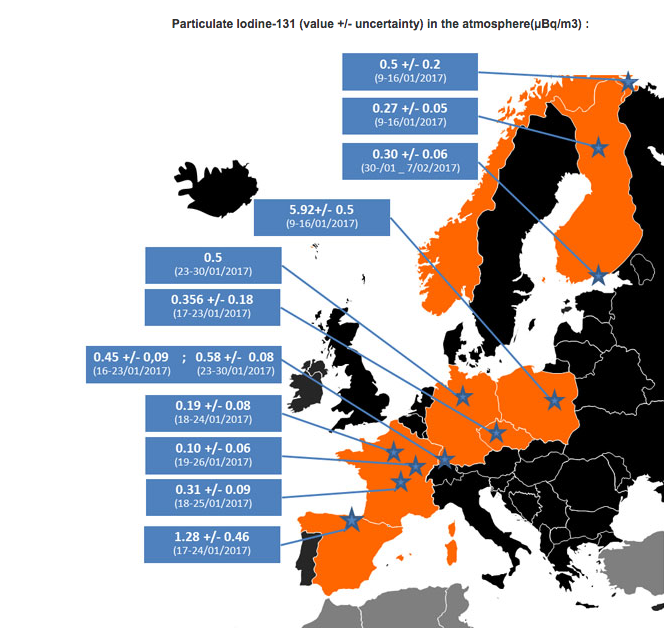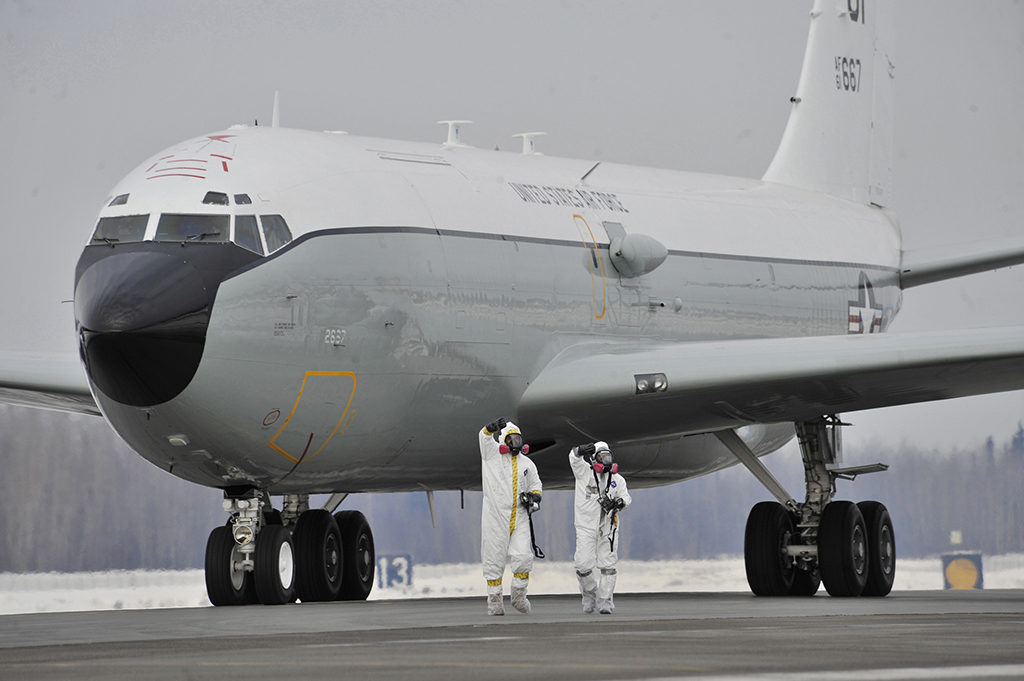The air filter station at Svanhovd - located a few hundred meters from Norway's border to Russia's Kola Peninsula in the north - was the first to measure small amounts of the radioactive Ionide-131 in the second week of January. Shortly thereafter, the same Iodine-131 isotope was measured in Rovaniemi in Finnish Lapland. Within the next two weeks, traces of radioactivity, although in tiny amounts, were measured in Poland, Czech Republic, Germany, France and Spain.
Norway was the first to measure the radioactivity, but France was the first to officially inform the public about it.
"Iodine-131 a radionuclide of anthropogenic origin, has recently been detected in tiny amounts in the ground-level atmosphere in Europe. The preliminary report states it was first found during week 2 of January 2017 in northern Norway. Iodine-131 was also detected in Finland, Poland, Czech Republic, Germany, France and Spain, until the end of January", the official French Institute de Radioprotection et de Süreté Nucléaire (IRSN) wrote in a press release.
No Health Concerns For Now
Mitigating some of the concerns, however, was the head of section for emergency preparedness at the Norwegian Radiation Protection Autority, Astrid Liland, who spoke to the Barents Observer and said the levels measured raise no health concerns. "We do measure small amounts of radioactivity in air from time to time because we have very sensitive measuring equipment. The measurements at Svanhovd in January were very, very low. So were the measurements made in neighbouring countries, like Finland. The levels raise no concern for humans or the environment. Therefore, we believe this had no news value," Astrid Liland answers when asked why the public was not informed.
Comment: The proper authorities never warn the public about a potential disaster until it's too late. See Fukushima and the Oroville Dam catastrophes as just two examples.
She points to Norway's nation-wide online network of 33 stations were people can check real-time measurements.
At Svanhovd, measurements in the period January 9-16 show levels of 0,5 micro Becquerel per cubic meter air (µBq/m3). In France, where authorities decided to publish the information, measured radioactivity were much lower, from 0,1 to 0,31 µBq/m3. Levels measured in Finland were also lower than in northern Norway with 0,27 µBq/m3 measured in Rovaniemi and 0,3 µBq/m3 in Kotka. Finland's Radiation and Nuclear Safety Authority (STUK) decided to follow the French example and posted a press release about the increased levels of radioactivity.
But No Explanation Where The Radiation Came From
Finnish authorities also underscores that the levels measured are far from concentrations that could have any effect on human health. Neither STUK, nor IRSN speculate in the origin of the released Iodine-131.
Astrid Liland can't either explain the origin of the radioactivity. "It was rough weather in the period when the measurements were made, so we can't trace the release back to a particular location. Measurements from several places in Europe might indicate it comes from Eastern Europe," Liland explains. "Increased levels of radioactive iodine in air were made in northern-Norway, northern-Finland and Poland in week two, and in other European countries the following two weeks, Astrid Liland says.
As the Barents Observers adds, Iodine-131 in the air could come from an incident with a nuclear reactor. The isotope is also widely used in medicine and for that purpose; many countries around the globe produce it.
All operators of nuclear reactors or institutions using Iodine-131 for medical purposes have detectors for external releases of radioactivity. In other words, as the Observer concludes, "Someone out there knows why the radioactivity was spread over larger areas of Europe."
Nuclear installations in northwastern Europe, were the radioactivity was first discovered, includes nuclear power plants in Finland, Sweden and Russia, in addition to nuclear powered vessels on Russia's Kola Peninsula and White Sea area. The source could as well come from even further away installations.
Constant Phoenix Deployed
Finally, adding an air of mystery to this alleged "incident" was the spotting of the "Constant Phoenix", which on Friday arrived in the UK's Mildenhall airbase after departing from Florida.
As the Aviationist explains, the WC-135 Constant Phoenix has been used in the past to determine whether nuclear tests or detonations have taken place in any given region. The WC-135 is a derivative of the Boeing C-135 transport and support plane. Two of these aircraft are in service today out of the ten examples operated since 1963. The aircraft are flown by flight crews from the 45th Reconnaissance Squadron from Offutt Air Force Base while mission crews are staffed by Detachment 1 from the Air Force Technical Applications Center.
The WC-135, known as the "sniffer" or "weather bird" by its crews, can carry up to 33 personnel. However, crew compliments are kept to a minimum during mission flights in order to lessen levels of radioactive exposure.
Effluent gasses are gathered by two scoops on the sides of the fuselage, which in turn trap fallout particles on filters. The mission crews have the ability to analyze the fallout residue in real-time, helping to confirm the presence of nuclear fallout and possibly determine the characteristics of the warhead involved: that's why the aircraft is important to confirm the type of explosion of today's test.
As Darin R. Pfaff, a former WC-135 aircrew member explained to us in a comment to a previous article on this aircraft: "airframes have two large supplemental charcoal filter packs, as well as HEPA/ULPA filters (we called them "lungs") for their cabin air. When the instruments indicate contact with radioactive debris, the crew will also reduce cabin airflow to just maintain pressurization, and all personnel on board will go to 100% oxygen through their masks. They will stay on 100% O2 until activity readings drop back down into the safe levels. Everybody wears a dosimeter, and those records are monitored to prevent unsafe exposure."So far there has been no official statement by any entity providing further details on the spike in Iodine levels, nor an explanation from the US military why the "Constant Phoenix" was deployed to Europe.
Along with monitoring nuke testing, the WC-135 is used to track radioactive activity as happened after the Chernobyl nuclear plant disaster in the Soviet Union in 1986 and Fukushima incident back in 2011.





[Link]
Similarly, with a half life of eight days, one must consider the distance radiation can travel in space over a week to identify external sources for the Iodine-131